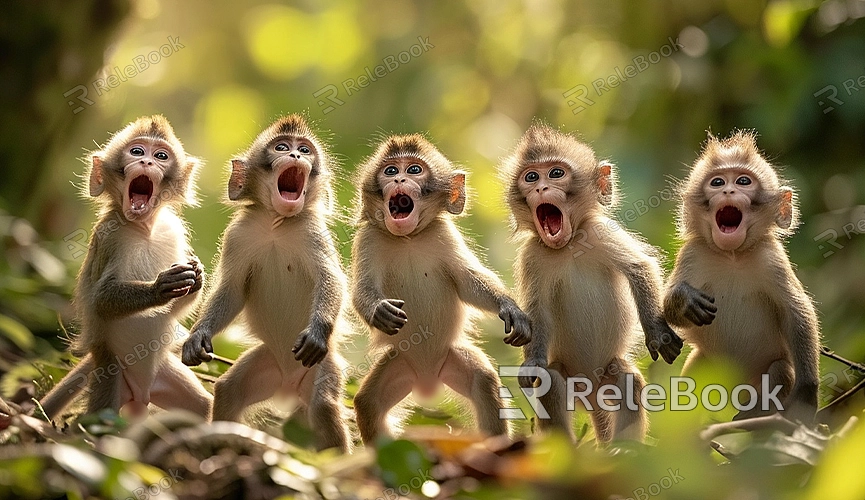Blender Monkey Texture
Adding textures to a 3D monkey model in Blender is a meticulous and challenging task. The primary texture used for the monkey model is fur texture, involving precise simulation of fur texture and realistic rendering of skin details. The following tutorial will guide you on how to create monkey fur texture in Blender and demonstrate the application of these techniques through various scene examples.

1. Import the Monkey Model:
Open Blender and import the 3D model of the monkey. Ensure the model structure is clear, aiding in the subsequent fur particle settings.
2. Switch to "Particle" Editing Mode:
In Blender, switch to "Particle" editing mode, preparing to set the fur on the monkey's body.
3. Add Fur Particles:
In "Particle" editing mode, add fur particles to the monkey model. Adjust the particle quantity, length, and direction to achieve a realistic fur effect.
4. Set Fur Material:
Enter the material editor and set an appropriate material for the fur. Adjust fur color and glossiness to make it resemble the realistic appearance of monkey fur.
5. Adjust Curl and Detail of Fur:
In particle editing mode, adjust the curl and detail of the fur, making it look more natural and layered.
6. Introduce Shadow and Reflection Effects:
Utilize light source settings to introduce shadow and reflection effects to the monkey fur, creating a realistic texture under different lighting conditions.
7. Add Forks and Irregularities to Fur Tips:
By adjusting the branching settings of fur, create forked and irregular shapes at the tips, enhancing the overall delicacy of the effect.
Common applications of fur-textured 3D monkey models in Blender:
1. Troop of Monkeys in a Tropical Rainforest:
In a tropical rainforest scene, the realistic refraction of sunlight on monkey fur brings the entire scene to life.
2. Monkey King on the Savanna:
A monkey on the savanna, with fur gently swaying in the breeze, showcasing the natural harmony of the grassland.
3. Rare Monkey Species in a Cave:
A rare species of monkey in a cave, with fur revealing a mysterious and captivating feeling under dim lighting.
4. Desert Adventure of a Monkey Group:
Monkey fur in the desert appears dry due to the arid climate, displaying a texture effect unique to the desert.
5. Arctic Monkey Covered in Ice and Snow:
In an Arctic environment, the monkey's fur exudes a chilly feeling, with intricate textures depicting a frigid atmosphere.
6. Experimental Lab Monkey in a Futuristic Setting:
A monkey in a laboratory setting, with fur illuminated by futuristic light sources, conveying a sense of future technology.
7. Leisurely Monkey Group at a Seaside Resort:
Sea breeze caresses a seaside resort, with monkey fur gently swaying and capturing glints of sunlight, creating a leisurely holiday atmosphere.
8. Nocturnal Monkey in a Jungle at Night:
In a nighttime jungle, the monkey's fur, lit by moonlight, presents a faint silver luster, adding to the mystery of nocturnal animals.
Through these examples, we can understand how to achieve the realistic texture of monkey fur in Blender and explore creative applications of fur texture in different environments. If you need high-quality 3D textures and HDRI or 3D model downloads, you can find them on Relebook. After downloading, simply import the textures and 3D models into your project for immediate use.

